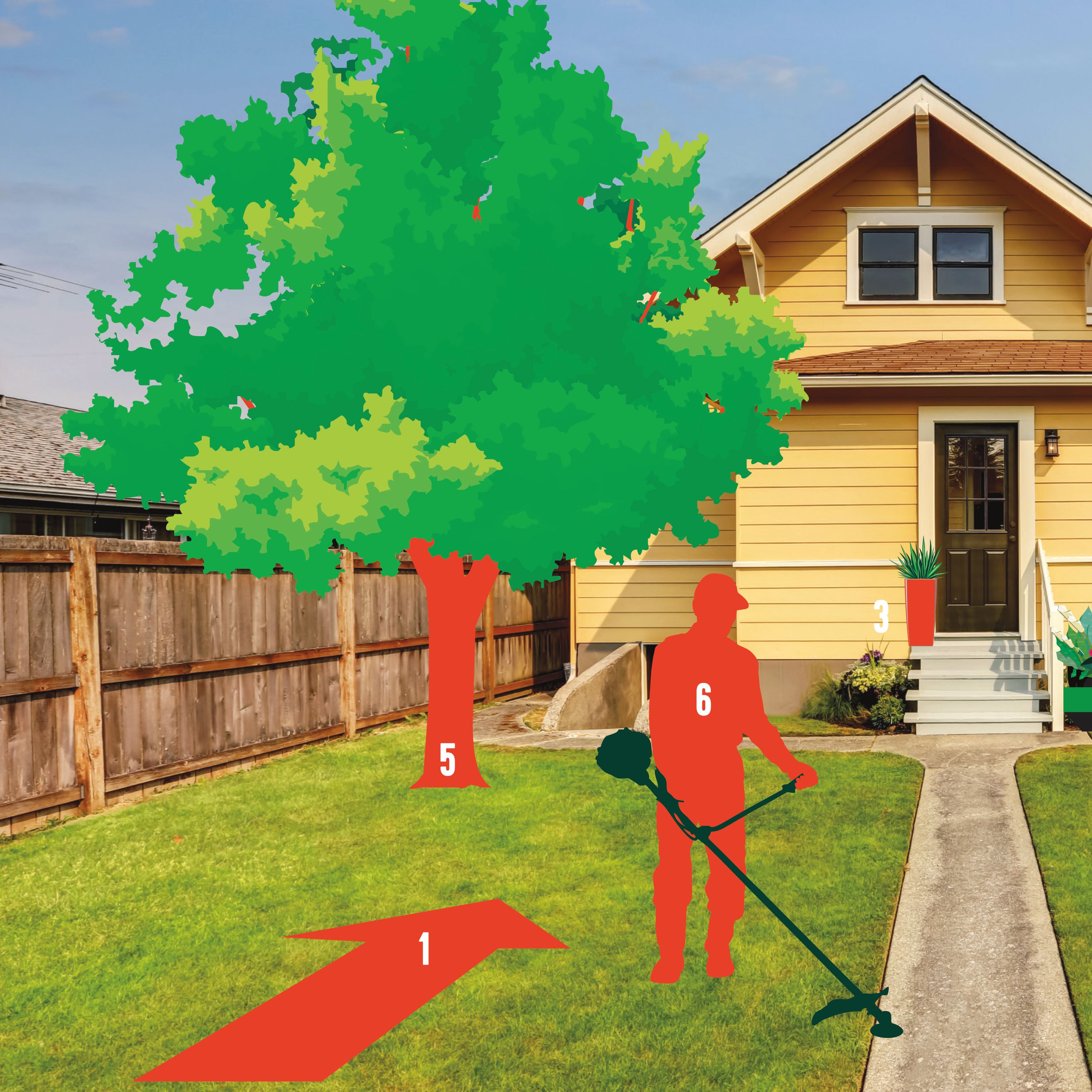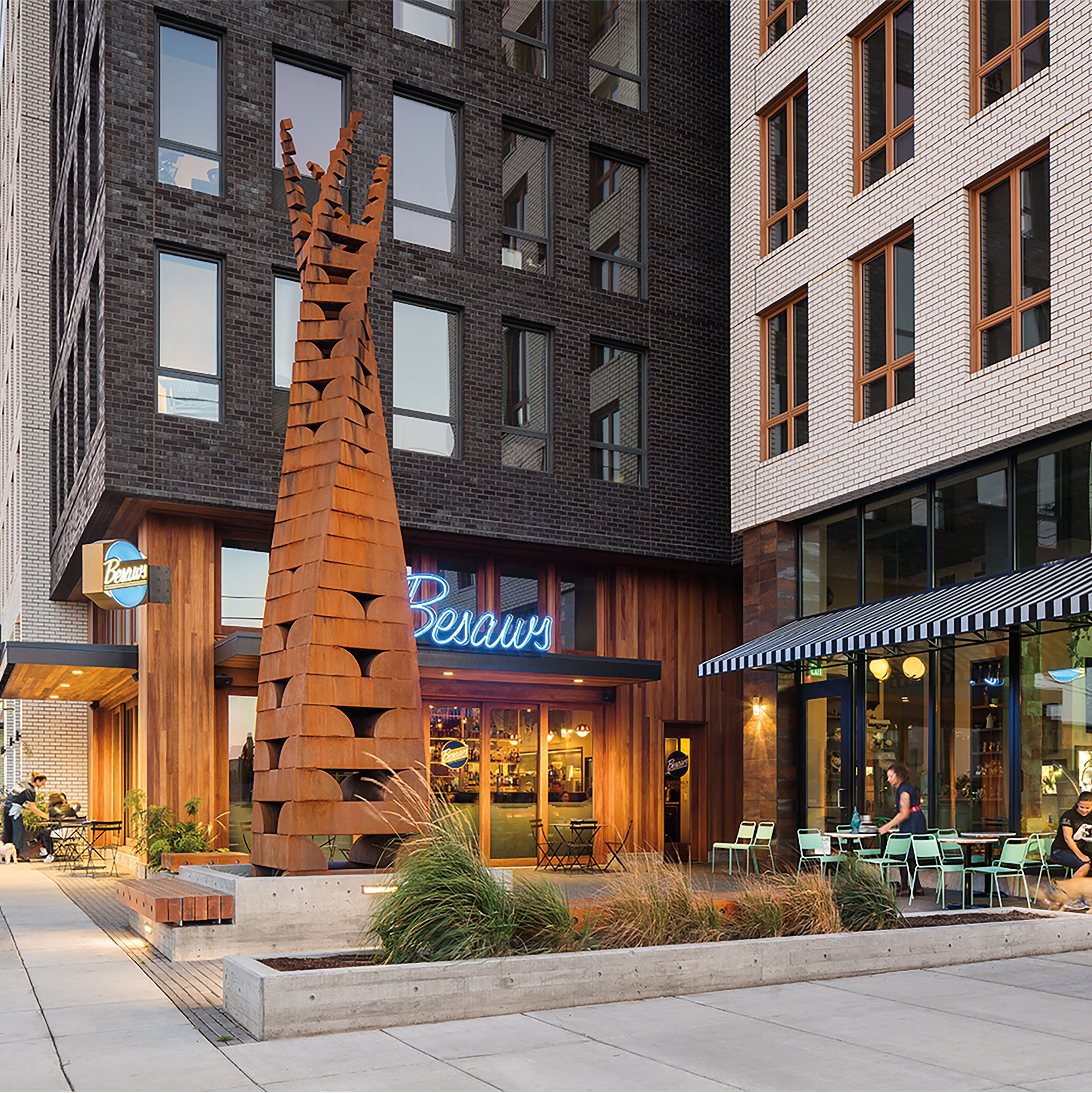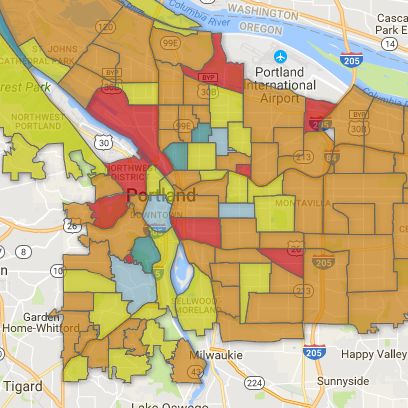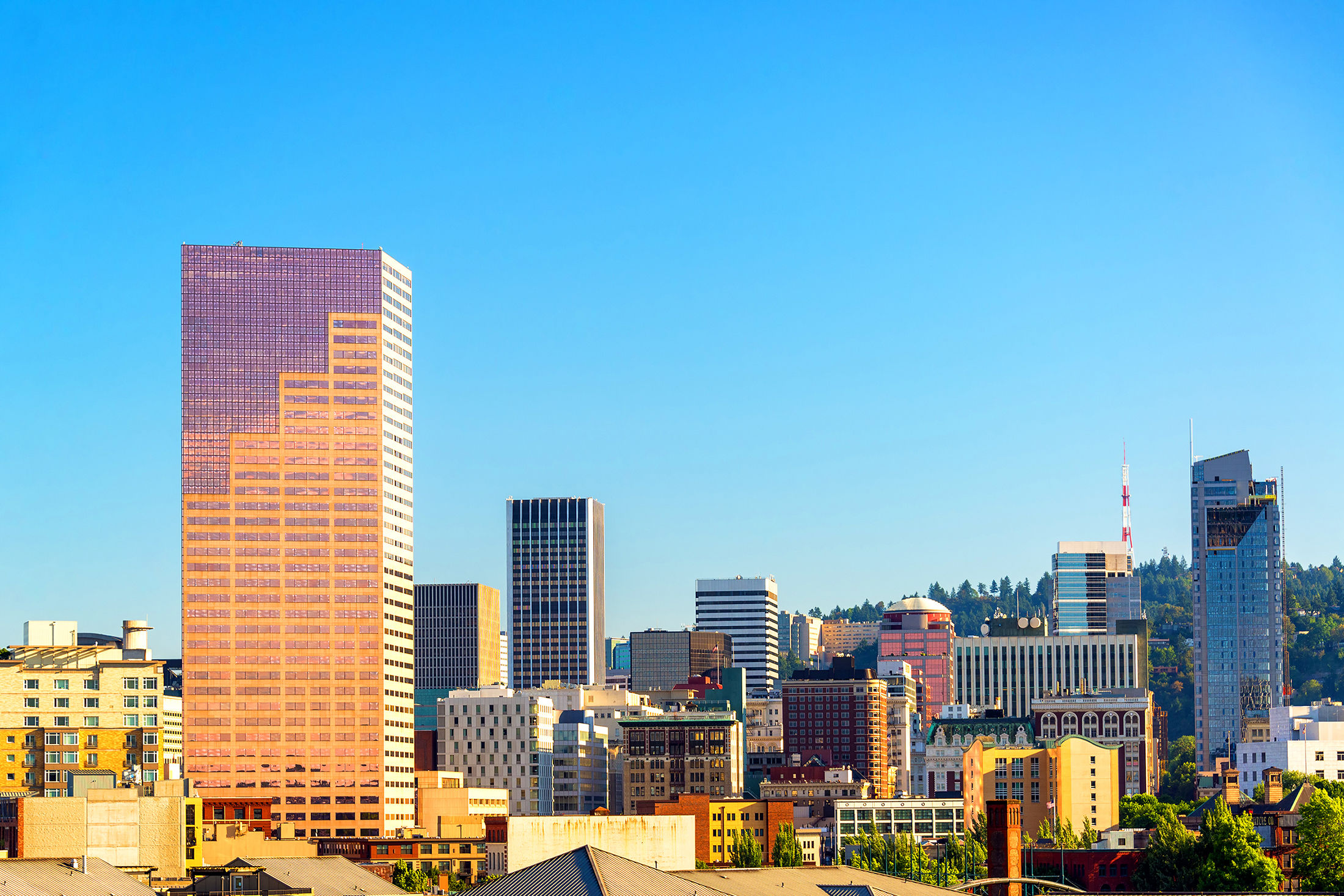Portland's Hottest Hoods: Which One Is for You?
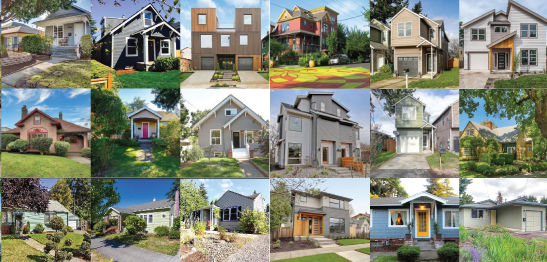
Launchpads for the Young, Single Urbanist
Right now, your typical Kerns resident is unmarried, often foot-powered, hovering around 33 years old, and probably renting a Craftsman house or heritage apartment near NE 28th’s Restaurant Row. (For buyers, this zone is competitive: houses sold this past year in a lickety-split average of 12 days.) Prepare for those singleton stats to hold but the area’s concept of what “home” looks like to shift seismically as multistory Burnside Bridgehead projects like the Aura and the Slate come on the market, along with the Goat Blocks complex and future Burnside Delta and 5 MLK in nearby Buckman.
Plots for Blossoming Families
Parkrose boasts surprisingly few parks (less than 1 percent of the neighborhood), but that hasn’t deterred families with young children from moving, in droves, to this pocket just southeast of the airport. Only wealthy Laurelhurst has a higher percentage of kids under 18, but it can’t compete with Parkrose’s low costs and 99 percent appreciation rate over five years. Driving that median sale price up, albeit to a still relatively modest $275K: new but familiar faces—11 percent of Parkrose residents lived in another Oregon county last year. On the west side, young families congregate in Northwest Heights, where median home sale prices have accrued just 20 percent since 2012, to $631K. (A fair price, maybe, to call Forest Park your backyard?)
Bazaars for Bargain Hunters
Last year, Woodstock and Mount Scott-Arleta stood out amid a fast-appreciating bloc north of Johnson Creek and west of I-205. This year, bidding wars blazed in their neighbors: Foster-Powell, Lents, and Brentwood-Darlington, where median prices nearly doubled over the past five years—yet can still fall well below the citywide median. Looking for the absolute cheapest neighborhood? Check out a Lloyd District condo at a median $206K. Want a yard? In Powellhurst-Gilbert, $245K can deliver a modest 1,500-square-footer.
Two Destinations for Downsizers
Wedged in the West Hills between Forest and Washington Parks, leafy Hillside is significantly more wealthy, well-educated, and—at a median 47 years of age—mature than the downtown districts just below. Nearly half of the neighborhood’s 2016 home sales were condos, and at $379 per square foot, they didn’t come cheap: not a problem, maybe, for empty nesters and downsizers with plenty of equity. (Still closer in, South Portland’s rapidly infilling waterfront condos come at half the price, and with six times the public transit options.)
Crossroads for Citizens of the World
If you want a community that draws on the whole globe—and, really, world, many of us still do!—you could check out South Burlingame. This divot of land, perched above River View Cemetery just south of SW Barbur Boulevard, is the hood with the highest rate of new international residents in the last year. Downtown boasts the highest number of movers from outside Portland—including those from other Oregon counties and other states. For a different take on immersion, look to Glenfair and Mill Park—among the city’s most language-diverse neighborhoods.
The Exemplars for Exurbanites
For a slice of the quieter life, consider Canby. Near the confluence of the Willamette and Molalla Rivers, residents of this burg of 17,000 tend to hold on to their homes. Which might just have something to do with boasting the metro area’s lowest crime rate, highest suburban Walk Score, and a stable population that saw a comparatively cheer-worthy $3K bump in median household income last year. Meanwhile, the grass has always been greener across the Columbia River in affluent Camas. Sure, its 3 percent appreciation rate last year is the metro area’s most sluggish. But that means less competition for the city’s new (average construction year: 1994) and relatively roomy (2,300 square feet, on average) home inventory.


